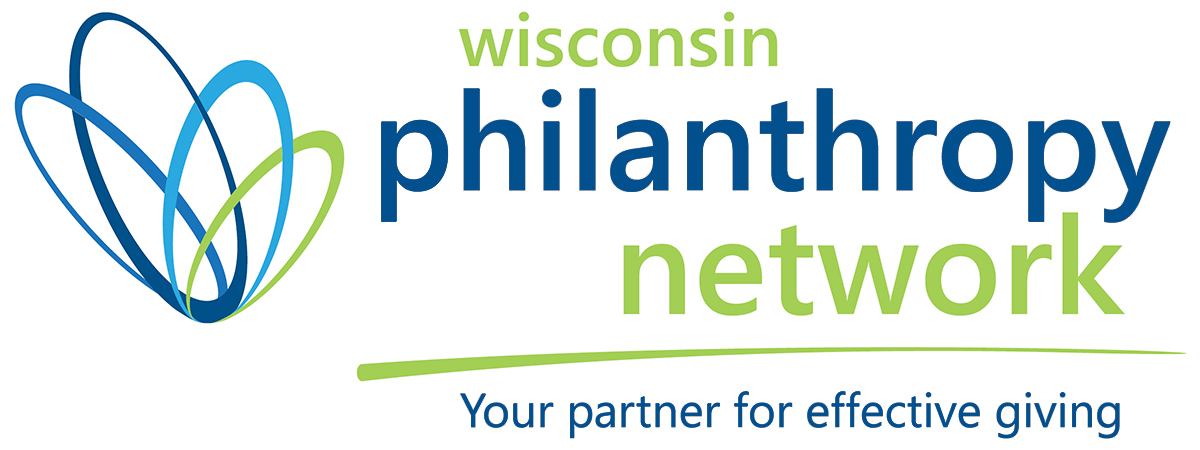Summary
Many community development financial institutions (CDFIs) are playing a critical role in enabling low-income communities and communities of color to weather the economic consequences of the COVID-19 pandemic. Philanthropists can support CDFIs through program-related investments and grants to deliver a more equitable economic response and recovery.
Multiple months into the COVID-19 crisis, philanthropies increasingly recognize the urgent need to support a more equitable economic response and recovery. Job losses are disproportionately falling on low-income people and communities of color in the United States. The federal Paycheck Protection Program (PPP) hasn’t adequately accounted for longstanding racial inequities in banking relationships and access to credit, and is therefore reinforcing them. And there is another housing crisis looming as renters and homeowners who have disproportionately lost their jobs can’t pay their rents or mortgages, exacerbating the inequitable financial burden of the disease.
Community development financial institutions (CDFIs) offer donors a compelling option. They have a decades-long track record of serving communities that have the least access to banking and credit. In economic downturns, CDFIs have stepped up. For example, during the Great Recession, CDFIs grew their lending activities by 76 percent, faster than traditional finance and with only slightly higher delinquency rates.[1] And, while some CDFIs did not survive, the sector as a whole emerged from the recession relatively strong.[2] Whether CDFIs are supporting small businesses, housing, or other community infrastructure, now is the time for philanthropies to give them some well-deserved attention, so they can support communities and sustain themselves through the near-term crisis and the longer-term recovery.
The ABCs of CDFIs
For the uninitiated, CDFIs are financial institutions that provide access to credit and other financial services to individuals, businesses, nonprofits, and communities. They grew out of the civil rights era when redlining and other discriminatory practices had left many communities underserved by traditional finance. Today, there are over 1,000 CDFIs in the United States, managing over $150 billion; combined, they would be in the top 20 largest domestic banks.
Many CDFIs are nonprofits, and foundations were their largest source of loan funding until the late 1990s. The Ford and the MacArthur foundations in particular made early and transformative investments in CDFIs. After the 1990s, philanthropic support of CDFIs declined significantly. At the same time, government policy changes resulted in new public funding for CDFIs, especially through increased bank lending. Banks used CDFIs to meet their Community Reinvestment Act (CRA) obligations to lend more to low- and middle-income people and communities. As a result, bank lending to CDFIs grew to four times more than philanthropic capital in CDFIs—totalling over $1.6 billion in 2013.[3]
CDFIs’ strategies have successfully reached marginalized communities. A recent survey of CDFIs found that they target underserved people and communities—roughly 85 percent low income, 58 percent minority, 48 percent women, and 26 percent rural communities.[4] CDFI financial services help people of color start small businesses and buy their first homes. Their lending to nonprofits enables communities to access affordable housing, healthy food, arts and culture, schools, healthcare, and childcare. CDFIs have achieved this without taking undue risk: the CDFI net charge off rate—the percent of outstanding loans that are never repaid—is just 1 percent.[5]
Philanthropic Partnerships for the COVID-19 Recovery
All this should mean CDFIs are ideal vehicles to respond to COVID-19’s devastating and inequitable economic impact. As Justin Maxson, CEO of the Mary Reynolds Babcock Foundation, explained, “In the South, CDFIs are essential for a just recovery. They have the relationships and track record. Banks don’t operate as deeply in rural, under-resourced areas as do CDFIs, whose missions focus them specifically on low-wealth places.” Without banking relationships or with weak relationships, small businesses and nonprofits in the most marginalized communities have been locked out of accessing federal PPP loans or other financial supports.
CDFIs are stepping up to fill the breach. Hope Credit Union, serving 100,000 people in the Mississippi Delta and across the Deep South, has processed more than 2,500 PPP loans and is restructuring existing loans to provide as much flexibility as possible to people in an area where poverty has exceeded the federal rate for over half a century—the same communities with the highest rates of slaveholding before the Civil War. “If you look at healthcare outcomes, education outcomes, housing conditions, healthy food access, and access to basic banking, all are below national rates in those communities,” said Bill Bynum, CEO of Hope. “And the disparities are worse where the Black population is greatest.”
Some CDFIs have found ways to help in collaboration with community partners to raise philanthropic support. Opportunity Fund partnered with the Silicon Valley Community Foundation to launch the Small Business Relief Fund, with additional support from Wells Fargo and other funders. The fund’s intent is to help overlooked minority, immigrant, and women-owned businesses survive, given their challenges in accessing PPP funds. “After the crisis, banks will be further away from this population, because the risk is greater and fintech lenders may not have the capital to make those investments,” explained Luz Urrutia, CEO of Opportunity Fund. “The institutions left to rebuild Main Street are CDFIs.”
IFF, in the Midwest, created a lending platform to make PPP loans to small nonprofits, particularly to those led by people of color shut out of capital in the past, not IFF’s traditional borrowers. This was a different tactic for IFF, which is more accustomed to making longer-term investments that help nonprofits build financial strength through facility ownership. But the organization saw a need and leaped to fill the gap. “Many small nonprofits were going to be wiped out, so we felt we had to respond,” explained Joe Neri, CEO of IFF. Additionally, with support from the MacArthur Foundation, IFF is providing technical assistance to nonprofit borrowers, to help them execute PPP-loan forgiveness and make the transition from response to recovery. CDFIs have the flexibility to respond to community needs that many traditional providers of financial services don’t have, if they receive the right support.
Why Now?
In the coming months, CDFIs will need to play an even bigger role in communities as the economic fallout progresses and as we begin shifting toward recovery. They will need to make new loans to reopen closed businesses. They will need to refinance mortgages and support existing and new affordable housing and community infrastructure. And they will need to support new entrepreneurs and cornerstone economic development projects. All this activity will focus on low-income people and communities of color that traditional banks may not serve.
Yet CDFIs face significant limitations. “We are at risk,” said Bynum, “because a significant portion of our portfolio consists of lower-wealth people and businesses that have less of a safety net.” CDFIs also often lack access to the equity or low-cost debt needed to invest more deeply in communities. Adding to the challenge, the CRA, which prompts banks to invest in CDFIs, was partly rolled back in May, potentially resulting in the loss of significant support for CDFIs at a time when their work is most needed.
Against those headwinds comes optimistic news: some philanthropists and investors have revitalized broader interest in CDFIs. Among them is Netflix, which announced on June 30 that it would invest 2 percent of its cash—up to $100 million, at the start—in financial institutions and organizations that directly support Black communities, such as Black-owned or Black-led banks and CDFIs. About $10 million of that investment will go to Hope and another $25 million will go to a new fund to be managed by the Local Initiatives Support Corporation, one of the largest CDFIs in the country. This capital is poised to make an enormous difference in communities, particularly if coupled with general operating support from philanthropies to address the CDFIs’ internal operations and serve community needs beyond direct lending. That’s how CDFIs can be a “good force multiplier for philanthropy,” said Aaron Seybert, managing director of the Kresge Foundation’s Social Investment Practice. “They are one of the best hopes that we have for equitable recovery.”
What to Consider
Community development financial institutions (CDFIs) have a critical job to do in the coming months and years that requires financial and organizational strength, and support from philanthropy and other sources of capital. Here are a few questions that funders might consider as they ramp up their support:
- In what ways does the CDFI seek structural change in communities—going beyond lending to drive more broad-based change? Many CDFIs are supporting policy changes, are proactively addressing gaps in funding, and have sought to become deeply embedded in communities.
- How is the organization centering racial equity internally and in its lending, programs, and services? That’s what IFF did when it targeted Paycheck Protection Program loans toward small nonprofits led by people of color. Simply lending in low-income communities does not necessarily, in itself, lead to progress on racial equity. While there is no single perfect solution for community development, CDFIs that continually evolve their strategies, decisions, and services to close racial gaps in economic opportunity may be particularly relevant to achieving an equitable recovery.
- How has the organization adapted its lending, programs, and services to address community needs as a result of COVID-19? Some CDFIs have shifted their lending priorities to engage in new arenas where they have seen gaps, as Opportunity Fund, the Silicon Valley Community Foundation, and other partners did when they launched the Small Business Relief Fund. Others have adjusted their lending terms to provide greater flexibility to existing borrowers. Similarly, how has the organization adapted its strategy to respond to what’s needed to support an equitable recovery?
- What actions has the organization taken to shore up its own sustainability? And what might the organization need in order to weather the recession? It’s not that only those in the strongest position deserve support—in fact, quite the opposite given that CDFIs led by people of color are undercapitalized compared to white-led organizations. All CDFIs will need support to get past this crisis, and the ones that invest in being proactive about their own sustainability will be best positioned to survive and, eventually, thrive.
We would like to thank the leaders we spoke with who shared their perspectives with us: Nancy Andrews, Bill Bynum, David Erickson, Susanna Hegner, Jane Henderson, Kimberly Latimer-Nelligan, Justin Maxson, Joe Neri, Dan Nissenbaum, Caroline Nowery, Aaron Seybert, and Luz Urrutia. We also thank Bridgespan Partners Nidhi Sahni and Devin Murphy, and former Bridgespan Consultant Eliza Loomis, for their critical contributions.
Notes
[1] Michael Swack, Jack Northrup, and Eric Hangen, “CDFI Industry Analysis: Summary Report,” Community Investments 24, no. 2 (Summer 2012).and Opportunity Finance Network.[2] Opportunity Finance Network, “CDFI Futures: An Industry at a Crossroads,” March 2016.[3] Ibid.[4] Opportunity Finance Network website referencing OFN member survey from 2018; another report from Opportunity Finance Network gave slightly different statistics: On average, 75 percent of a CDFI’s clients are low-income, 52 percent are people of color, and 48 percent are female (see “20 Years of Opportunity Finance: 1994- 2013: An Analysis of Trends and Growth,” November 10, 2015).[5] Opportunity Finance Network website.




